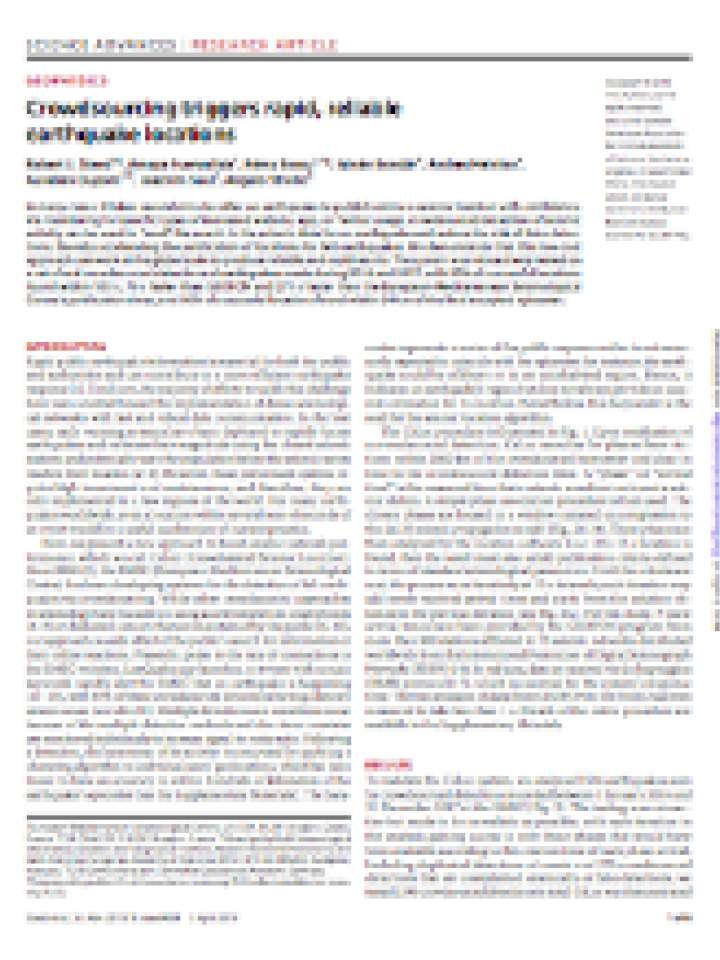Crowdsourcing triggers rapid, reliable earthquake locations
In many cases, it takes several minutes after an earthquake to publish online a seismic location with confidence. Via monitoring for specific types of increased website, app, or Twitter usage, crowdsourced detection of seismic activity can be used to “seed” the search in the seismic data for an earthquake and reduce the risk of false detections, thereby accelerating the publication of locations for felt earthquakes. We demonstrate that this low-cost approach can work at the global scale to produce reliable and rapid results. The system was retroactively tested on a set of real crowdsourced detections of earthquakes made during 2016 and 2017, with 50% of successful locations found within 103 s, 76 s faster than GEOFON and 271 s faster than the European-Mediterranean Seismological Centre’s publication times, and 90% of successful locations found within 54 km of the final accepted epicenter.
Explore further
